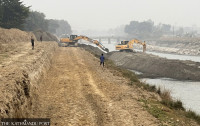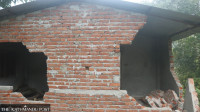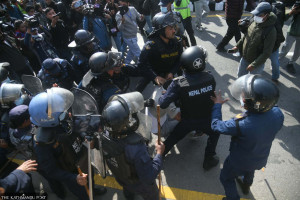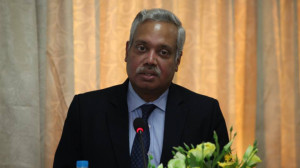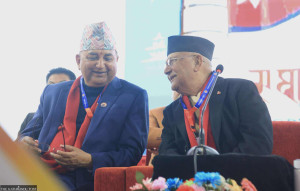National
A look at the two impeachment motions against Nepal chief justices
Cholendra Shumsher Rana is the second to face impeachment after Sushila Karki in 2017.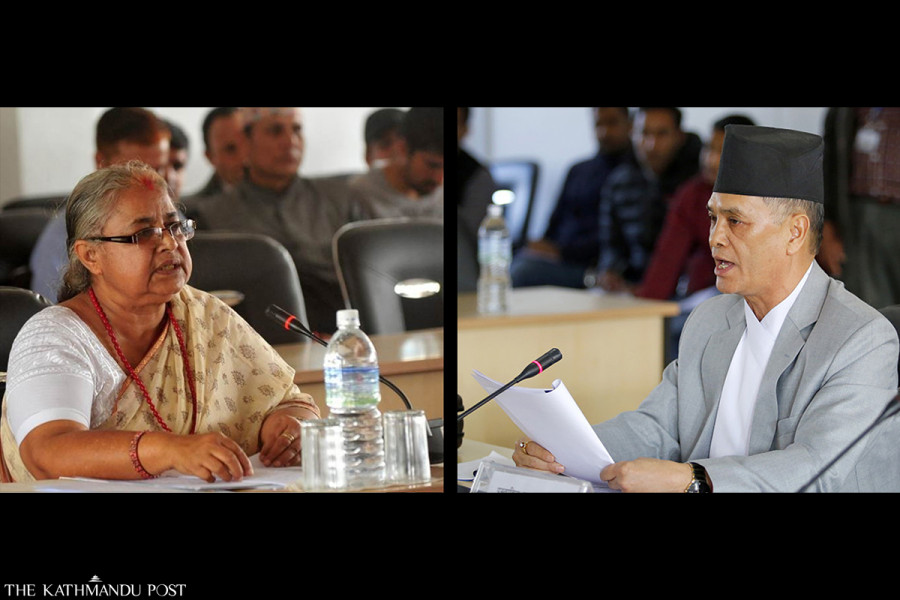
Post Report
April 30, 2017.
Nepal’s two ruling parties filed an impeachment motion against the then chief justice Sushila Karki.
February 13, 2021.
Nepal’s three ruling parties filed an impeachment motion against Chief Justice Cholendra Shumsher Rana.
Karki and Rana are the only two chief justices to have ever faced impeachment motion in the history of Nepal’s judicial system.
Here is a comparison of the two impeachment motions.
When the motion of impeachment against Karki was filed almost four years ago, the Maoist Centre and the Nepali Congress were leading a coalition government with Maoist chair Pushpa Kamal Dahal as prime minister.
Now, as Rana faces impeachment, Congress President Sher Bahadur Deuba is prime minister backed by the Maoist Centre. The impeachment motion is backed by the Nepali Congress, Maoist Centre and CPN (Unified Socialist), an offshoot of the main opposition CPN-UML.

When the motion was filed against Karki, Congress lawmaker Min Bahadur Bishwakarma was the proposer. The motion, signed by 249 lawmakers from the Congress and the CPN (Maoist Centre), was seconded by Tek Bahadur Basnet, chief whip of the Maoist party.
The motion against Rana was proposed by Maoist Centre chief whip Dev Gurung, Nepali Congress whip Pushpa Bhusal, and Jeevan Ram Shrestha, chief whip of the CPN (Unified Socialist), and 95 other lawmakers seconded it. As many as 98 lawmakers from the three parties have signed the impeachment motion including Gurung, Bhusal and Shrestha.
The main opposition had opposed the impeachment motion against Karki and it has objected to the motion against Rana as well.

When the impeachment motion was filed against Karki, Rana was serving as a justice at the Supreme Court. Karki’s automatic suspension meant the then seniormost justice Gopal Parajuli taking over. Reportedly, neither Parajuli nor Rana had good relations with Karki. When a petition was filed against the impeachment motion against Karki by advocates Sunil Ranjan Singh and Kanchan Krishna Neupane, then acting chief justice Parajuli assigned the case to the Rana-led bench.
A single bench led by Rana on May 5, 2017 stayed the impeachment motion, saying “the move to impeach the chief justice is against the spirit of the Constitution of Nepal.”
When then chief justice Parajuli resigned after getting embroiled in a series of controversies, then seniormost justice Deepak Raj Joshi was recommended as the new chief justice. But he failed the parliamentary hearing, leading to Rana’s appointment as chief justice on January 2, 2019.
Almost five years later, Rana, who once stayed the impeachment motion against the chief justice, is facing an impeachment motion.

When Karki faced the impeachment motion, she had about two months—until June 6, 2017—remaining for her retirement.
But the impeachment motion against Rana was brought with almost ten months of his term remaining. His term officially expires on December 12 this year.
When the Maoist Centre and the Nepali Congress registered the impeachment motion against Karki, they accused her of interference as the Supreme Court had in March that year overturned the government decision to appoint Jaya Bahadur Chand as the chief of Nepal Police. Constitutional experts had decried the move against Karki. Karki, the first female chief justice of Nepal, had a fairly clean record.
Rana has been accused of failing to discharge his duties and abusing authority. In their 21-point impeachment proposal, the lawmakers have also given references of the protests against Rana by justices and lawyers. Rana, who had earned praise for restoring the House dissolved by the Oli government twice, was dragged into controversy first in October after justices launched their protest against him. It was Rana who paved the way for the parties, which have filed an impeachment motion against him, to form a government on July 12 last year after ordering the ouster of Oli.




 16.12°C Kathmandu
16.12°C Kathmandu

